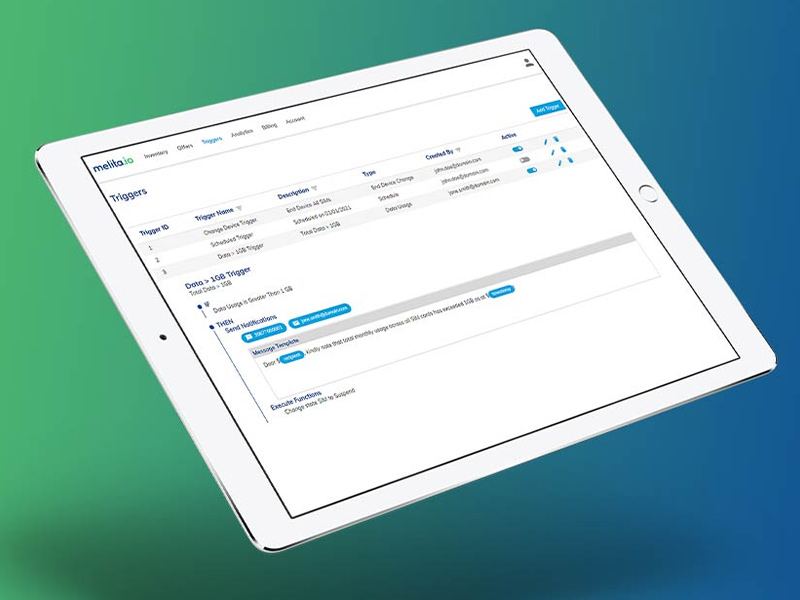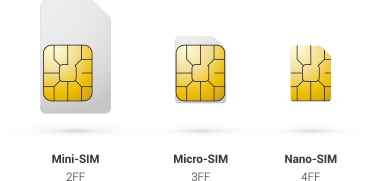How to choose IoT SIM Cards, and why does it matter?
One of the most important factors in deploying an efficient and successful Internet of Things (IoT) system is, the type of IoT SIM Cards used by a network provider
Melita.io provides a global IoT SIM, which unlike other SIM providers automatically optimises connectivity by choosing the strongest signal. With coverage in many different countries, melita.io is set to roam over the strongest network always prioritizing connectivity over data rates.
For global IoT deployments, IoT Sim Cards require multi-network access without the need for different SIMs. For this reason, melita.io’s universal SIM cards connect to 2G, 3G, 4G, 5G, LTE-M & NB-IoT networks across more than 260 roaming partners, in more than 160 countries and with multiple roaming partners in most countries.
This means that as an IoT deployment grows there’s no need to integrate with new providers because the Multi-Sim technology from melita.io switches profiles automatically and whenever required. In addition, new SIMs with new profiles can be triggered and provisioned Over-the-Air (OTA).
Free cloud-based IoT Management Portal
Melita.io’s IoT Management Portal comes free with every IoT deployment. The portal is cloud-based thus accessible at anytime from anywhere and is super easy to use.
With the real-time visibility that the IoT Management Portal provides, IoT systems can be maintained and optimal operational levels, by pre-empting issues before they arise and fixing them instantly when they do.
Melita.io’s Management Portal also allows the creation of new IoT SIM connections, and the full management of existing ones, including suspending and resuming services over the air.

Billing services are also easily accessible through the Management Portal which offers the option of downloading invoices, paying online, and editing payment methods.
All melita.io customers get free access to all the tools and resources of melita.io’s IoT management portal and except for the SIM triggers, the same access is applied to LoRaWAN connected devices and systems.
Two Melita.io IoT SIM Types
IoT devices vary greatly, as do different deployments and customer requirements. However, in all cases, cellular connectivity remains the most dependable and popular connectivity method for IoT (Internet of Things) devices.
An IoT Subscriber Identity Module (SIM) is used to identify one device from another and to connect them to wireless cellular networks.
melita.io utilises two different IoT SIM technologies depending on deployment requirements and their nature.
The two IoT SIM technologies are the SIM card (UICC) and the Chip SIM (MFF2 UICC). In both cases, the SIM uses what is referred to as an IMSI number (International Mobile Subscriber Identity) which is used to identify any connected device anywhere around the world.

SIM card (UICC)
This is the normal plastic SIM card which comes in four form factors or sizes – 1FF, 2FF, 3FF and 4FF. The 1FF option is not in use anymore for modern devices. All other types, from 2FF to 4FF, are still leading cellular connectivity.
These SIMs are widely available, are reasonably easy to operate, and are very well compatible with most hardware modules.
UICC SIM Cards vary in size depending on the device in question. They go from mini to micro to nano SIMS and their sizes vary as per below:
- 1FF 85.6mm × 53.98mm × 0.76 mm (3.370″ x 2.125″ x 0.029″)
- 2FF (mini SIM) 25mm x 15mm x 0.76mm (0.984″ x 0.590″ x 0.029″)
- 3FF (micro SIM) 15mm x 12mm x 0.76mm (0.590″ x 0.472″ x 0.029″)
- 4FF (nano SIM) 12.3mm × 8.8mm × 0.67mm (0.484″ x 0.346″ x 0.026″)
Chip SIM (MFF2 UICC)
This is an embedded type of SIM which works in the same way as a regular SIM card, but which is vacuum-sealed making it more hard-wearing. At the stage of manufacturing a Chip SIM can also be directly soldered to the circuit board which makes it the best choice for outdoor use or for use in environments that are subject to constant motion. In essence, it provides a longer lifecycle in harsher environments.
Additionally, chip SIMs cannot be removed from the device that they are permanently installed thus making them more secure.
The MFF2 (Chip SIM) comes in one size – 6mm × 5mm × 0.9 mm (0.236″ x 0.196″ x 0.035″).
Beyond excellent connectivity in over 160 countries, melita.io provides full control of IoT SIMs at your fingertips. With API offered by melita.io you can easily monitor and self-manage IoT SIMs.
What can you access and manage via melita.io API?
- Filter the list of SIMs associated with an offer
- SIM details for a specific ICCID
- Last location (country) for a specific SIM identified by the ICCID
- Initiate a suspend or resume operation on a specified SIM
- Usage volume/quantity details for a specified date period for your SIMs
- Update the friendly name for a specific SIM identified by its ICCID
How much does it cost?
The best value option starts at €0.95c per SIM based on a 24-month commitment. For optimal efficiency, data bundles are shared across all SIMs and cost €6.50 per 1GB in Euro+ Zones. Volume discounts are applied for orders exceeding 1,000 SIMs. The offer includes free access to the melita.io IoT SIM management portal.
Take Advantage of our Free Trial Pack
Try our SIM pack free of charge for 90 days.
The pack includes 10 SIM cards, 100MB and 100 SMS shared across the 10 test SIMs. Request a trial pack free of charge.
